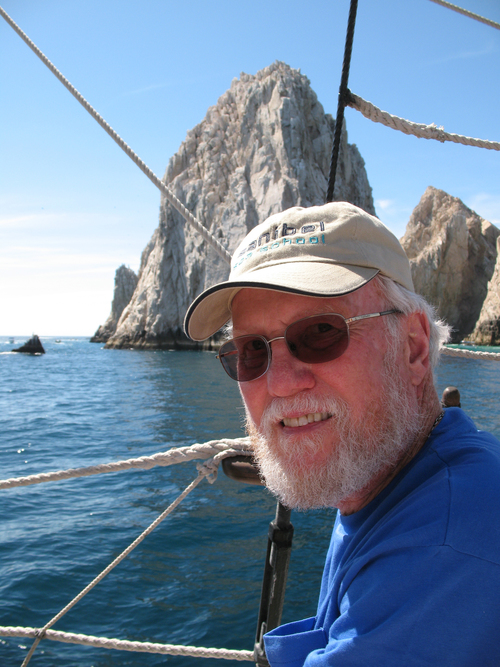Dr. Peter Brussard, a founding member and past president of SCB, passed away on 19 May. Peter was one of the first scientists to use molecular data for characterization and analysis of threatened species and a professor emeritus in the Department of Biology at the University of Nevada, Reno. He was 79 years-old.
 |
|
Peter Brussard co-founded SCB and served as the fourth president of the Society. Photo from the Great Basin Bird Observatory where Peter served as a board member. |
Brussard “was there from the very beginning of the Society for Conservation Biology,” said Curt Meine, a senior fellow at the Aldo Leopold Foundation and an environmental historian who has written about the history of conservation biology.
The beginning was 8 May 1985 at the Second Conference on Conservation Biology in Ann Arbor, Michigan where scientists alarmed by the biological diversity crisis passed an informal motion to organize the Society for Conservation Biology. The motion followed reports by Peter Brussard and Jared Diamond who met during the meeting to discuss the need for a multidisciplinary, mission-oriented professional society and a journal to help develop the scientific and technical means for the protection, maintenance and restoration of biodiversity. Less than one year later, SCB was incorporated in California and would soon receive nonprofit status from the Internal Revenue Service.
Peter Brussard served as SCB’s first secretary-treasurer and chaired the Conference Committee that organized SCB’s first International Congress for Conservation Biology, which took place at Montana State University in Bozeman, Montana in 1987.
For several years, Peter served on the board of editors of Conservation Biology and worked closely with David Ehrenfeld, the first editor of the journal.
“Peter was great to work with, always supportive, good-natured, and very knowledgeable,” Ehrenfeld said. “In the early days of Conservation Biology, Peter steered us through the crises that afflict every startup enterprise. The conservation community owes him a great debt.”
Peter was an academic advisor and PhD professor at the University of Nevada, Reno to former Conservation Biology editor Erica Fleishman, who fondly recalled his sense of humor and humility. He was “an excellent scientist, natural historian, and person of letters,” she said. “He didn't take himself too seriously, and his wicked sense of humor helped to ensure that no one else took themselves too seriously, either.”
“Pete reminded all of us that so-called sophisticated analyses might complement, but never substituted for, a deep understanding and appreciation of nature. He valued reading and writing and the visual and performing arts in their own right and as essential to being a complete ecologist and citizen. Pete listened to and engaged with diverse stakeholders before "stakeholders" became a buzzword. He cared about his colleagues and he loved his family and the west,” she said.
Peter served as the fourth president of SCB (1993-1995) just as former board member Curt Meine was becoming active with SCB’s board.
“Although I did not know Pete at all at that point, I appreciated his presence as a steady hand at the helm,” Meine said. “We were a strong-minded, upstart bunch. He was, in my eyes, an experienced elder: no less determined, but able to keep his younger colleagues on track and focused!”
Prior to his retirement from the University of Nevada, Reno, Peter taught at Stanford University, Cornell University and Montana State University. He served on many boards, including the Great Basin Bird Observatory in Reno, Nevada.
“We are the better for having known him,” Fleishman said. “We will miss him very much.”